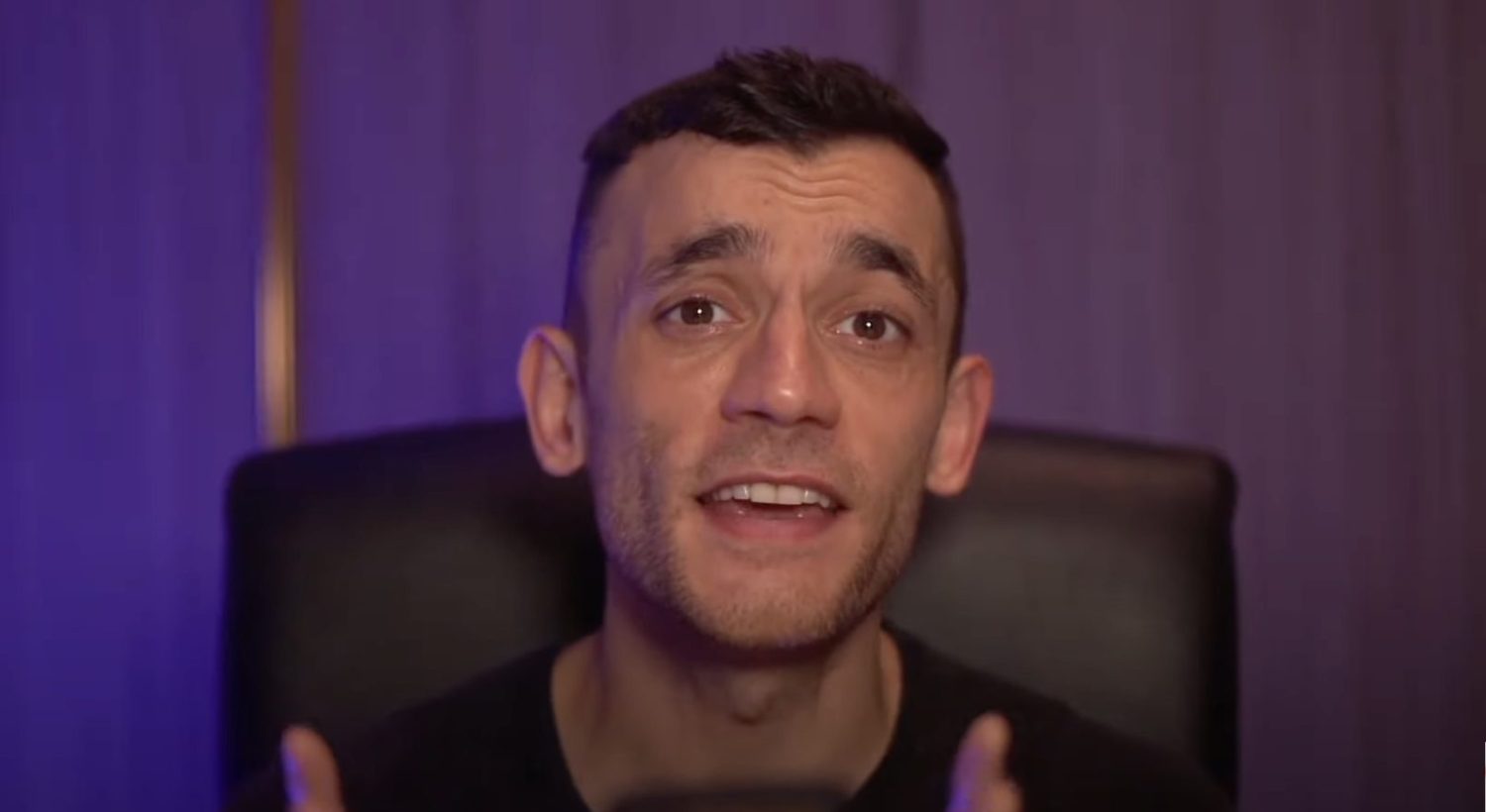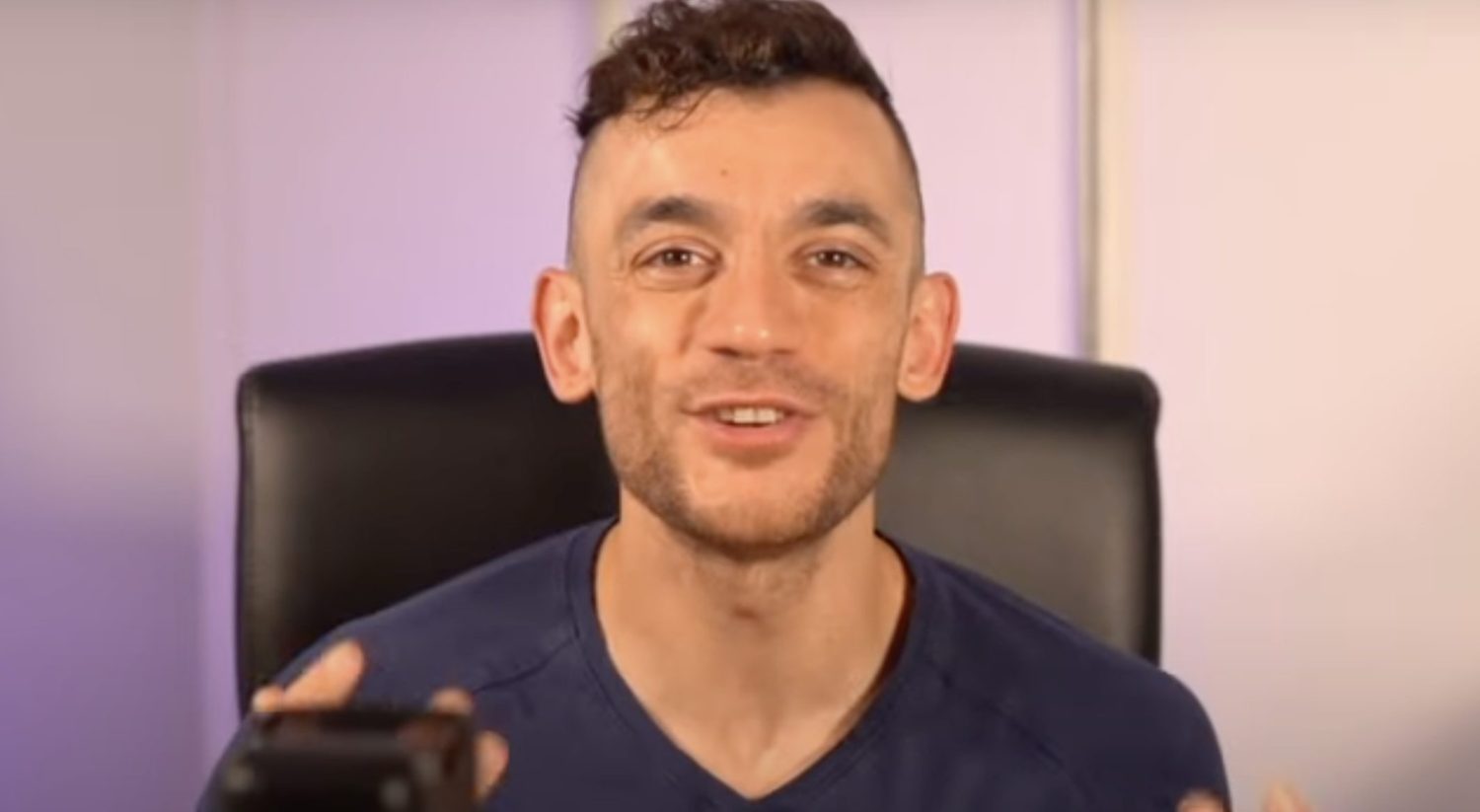Immerse yourself in the cutting-edge fusion of AI and video marketing as we unfold the secrets of Precision Targeting! Unleash the full potential of your marketing strategy by mastering AI Video Conversion, a game-changing tool ushering in unprecedented levels of accuracy and performance. Precision Targeting with AI Video Conversion significantly enhances the effectiveness of marketing efforts by allowing businesses to tailor content for specific audiences, potentially increasing engagement and conversions.
Understanding Precision Targeting
Precision targeting is more than a marketing buzzword; it’s a tactical approach that could revolutionize your strategic efforts in reaching your specific audiences. As we navigate this section, we’ll clarify what precision targeting means, highlight the importance of honing in on your unique target audience, and guide you in the seamless execution of these innovative techniques.
Understanding the Basics of Precision Targeting
Understanding the basics of precision targeting involves understanding how to pinpoint your audience based on highly specific parameters.
This marketing strategy nurtures an approach where messages are delivered solely to those within a predetermined, granular targeting profile.
For instance, an e-commerce beauty brand could use precision targeting to reach out to women between 25 and 35 years old, living in urban areas, possessing a demonstrated interest in organic products, and whose online behavior suggests a propensity to make purchases during discount seasons.
The effectiveness of this targeted approach is confirmed by a McKinsey report, which found that personalization can reduce acquisition costs by as much as 50 percent, lift revenues up to 15 percent, and increase the marketing spend efficiency by up to 30 percent.
Therefore, understanding precision targeting is crucial. It leads to improved business outcomes and overall customer satisfaction by delivering the right message to the right audience at the right time.
Defining Your Target Audience for Precision Targeting
Defining your target audience is the first and most crucial step in precision targeting. When you understand your audience’s tastes, preferences, behaviors, and habits, you can tailor your messages to resonate with them and meet their specific needs.
For instance, a fashion retailer may target young adults interested in sustainable fashion. Data can be leveraged from different sources, such as social media insights, buyer personas, or customer surveys, to refine the target audience characteristics.
This may include demographic information, geographical location, interests, lifestyles, or previous purchasing habits. Precise identification of target audience results in higher conversion rates because promotional efforts and resources are directed towards those most likely to respond positively and engage in desired customer behavior.
Therefore, the clearer your understanding of your target audience, the more effective your precision targeting efforts will be.
- Define your target audience thoroughly, understanding their tastes, preferences, behaviors, and habits to tailor your messages effectively.
- Leverage data from various sources like social media insights, buyer personas, or customer surveys to refine your target audience characteristics including demographic information, geographical location, etc.
- Focus your promotional efforts and resources towards your precise target audience to achieve higher conversion rates and desired customer behavior.
Implementing Precision Targeting Techniques
Implementing precision targeting techniques demands a thoughtful and data-driven approach.
Essentially, the process begins by establishing a detailed understanding of your target market, which can depend on various factors such as demographic variables, behavioral tendencies, and consumption patterns.
Techniques such as programmatic advertising and the use of AI in data analysis can play a significant role in identifying and segmenting the potential audience in real-time.
For instance, a recent report by eMarketer showed companies that implemented precision targeting reportedly had a 30% increase in their conversion rates.
Therefore, the incorporation of these techniques into a marketing strategy allows for targeted advertising, ensuring messages reach the right people at the right time, which is an essential aspect in enhancing the overall efficiency of marketing campaigns.
Primer on Integrating Precision Targeting with AI
Precision targeting, when powered by artificial intelligence, can finely tune your marketing efforts and drastically improve outcomes. The following sections will break down the fundamentals of precision targeting, illustrate the impact of incorporating AI into the process, and provide practical examples showcasing the potential of AI-integrated precision targeting.
Understanding the Basics of Precision Targeting
Precision targeting is a fundamental aspect of advanced marketing techniques. It utilizes detailed customer data to customize and tailor promotional content to individual customers. This tool increases engagement rates by delivering relevant and personalized messages to the right audience.
For instance, brands like Netflix and Spotify have been using precision targeting to recommend personalized content based on users’ viewing or listening history, thus enhancing user experience and loyalty. The system’s capabilities are significantly improved when precision targeting is integrated with AI.
AI helps analyze huge volumes of data more accurately and rapidly, enabling more precise targeting. Sophisticated AI algorithms can assess a consumer’s past behavior, location, demographic details, and predictive behavior to fine-tune marketing strategies, making them more cost-effective and efficient.
Therefore, understanding precision targeting is critical for brands looking to maximize their marketing efforts with AI.
Incorporating Artificial Intelligence (AI) in Precision Targeting
Integrating Artificial Intelligence (AI) into precision targeting streamlines the delivery of highly personalized content, ads or messages to specific markets or individuals. AI does this by leveraging big data analytics and machine intelligence to collate, curate and analyze vast amounts of data, thereby turning them into useful insights for precision targeted marketing campaigns.
For example, a study by McKinsey showed that Netflix saved approximately $1 billion in 2017 by using AI to make personalized recommendations, thereby demonstrating the potential of AI in precision targeting. Consequently, AI not only reduces marketing costs by preventing the waste of resources on non-prospects but also increases revenue by focusing on potential, likely-to-convert prospects.
By continuously learning from the data it processes, AI effectively enhances the efficacy and efficiency of precision targeting strategies. Additionally, the AI’s ability to analyze real-time data allows it to adapt quickly to changing consumer behaviors or market trends, ensuring that the targeted marketing content remains relevant and impactful.
- Integrate Artificial Intelligence into precision targeting to streamline the delivery of highly personalized content, ads or messages by leveraging big data analytics and machine intelligence.
- Utilize AI to minimize marketing costs and maximize revenue by focusing on likely-to-convert prospects based on the analysis of large amounts of data for creating targeted marketing campaigns.
- Ensure continuous learning from processed data to enhance the efficacy and efficiency of precision targeting strategies and make certain quick adaptability to changing consumer behaviors or market trends for maintaining relevancy and impact of targeted marketing content.
Practical Applications and Case Studies of AI in Precision Targeting
Applying artificial intelligence (AI) to the field of precision targeting has resulted in remarkable advancements and efficiency. For example, online retail giant Amazon employs AI to generate personalized product recommendations.
This is possible because AI algorithms analyze individual users’ browsing and purchasing history, thereby improving the accuracy and precision of targeted marketing strategies. Similarly, in healthcare, organizations like Tempus are using AI to target treatments for cancer patients, where AI-driven molecular data enable the precise targeting of therapy to a patient’s individual tumor.
These case studies showcase how AI can be instrumental in boosting the efficacy of precision targeting, providing valuable insights and predictions. By integrating AI with precision targeting, businesses can make more informed decisions and deliver tailored solutions to their clientele.
Step-by-Step Guide to AI Video Conversion
1. The realm of AI Video Conversion may seem complex at first glance. In ‘Understanding the Basics of AI Video Conversion’, we aim to simplify these complexities, offering you an accessible view into this essential digital tooling process.
2. The choice of the apt AI Video Conversion Software can make or break the quality of your video content. Our section, ‘Choosing the Right AI Video Conversion Software’, presents detailed insights to help you make the most fitting selection for your needs.
3. ‘Carrying out an AI Video Conversion doesn’t have to be an intimidating task. In ‘Executing the AI Video Conversion Process’, we decode the technique step-by-step, making it a cakewalk for both beginners and professionals alike.
Understanding the Basics of AI Video Conversion
Understanding the basics of AI video conversion is the first crucial step in leveraging this exciting technology. At its core, AI video conversion involves computer vision algorithms learning to enhance or alter digital footage automatically.
By analyzing countless samples, AI can identify patterns and make informed changes to videos such as resolution improvement, color adjustments, or format shifting. For example, AI systems can upscale a low-resolution video to a high-definition version by predicting and filling in the extra pixels needed intelligently.
Simultaneously, they might enhance the color and contrast based on observations made from heaps of high-quality footage. Effective AI video conversion relies on superior machine learning models, plentiful and diverse training data, and powerful computational resources.
The seamless integration of these elements translates into a video conversion tool that can adapt to varying requirements and deliver unique results.
Choosing the Right AI Video Conversion Software
Choosing the right AI video conversion software is a critical step in the process of AI video conversion. As the heart of the operation, your selected software determines the quality, efficiency, and overall outcome of your conversion.
There are numerous options available in the market, each with unique features and capabilities. For instance, some software options excel in speed, converting videos at record time, while others prioritize quality, ensuring minimal loss of resolution in the conversion process.
Additionally, specific programs offer advanced AI technologies like machine learning algorithms for better optimization. A reliable way to make a choice is by considering your specific conversion needs, available budget, and user reviews on software performance.
This way, you’re assured of a tool that resonates with your objectives and offers good value for your investment. With the right software in place, the rest of your video conversion steps become significantly easy and effective.
- Identify your specific conversion needs and determine the key features a software must have to meet these needs.
- Research and consider available AI video conversion software options taking into account your budget and desired software capabilities.
- Check user reviews on software performance to help inform your final decision.
Executing the AI Video Conversion Process
Executing the AI video conversion process predominantly involves using AI-powered software which provides automated video enhancement capabilities along with conversion tools. To illustrate, if software like DAIN, an AI tool developed solely for the interpolation of videos, is used, it exponentially mitigates the time and effort compared to traditional video conversion mechanisms.
The process first commences with the input of raw video files into the AI software platform. Then, depending upon selected settings and requirements, the AI performs its tasks, which can include upscaling, noise reduction, and frame interpolation, among other enhancements.
Meanwhile, it effectively utilizes sequential prediction and motion-compensated interpolation, utilizing thousands of data samples for utmost precision. Once finished, the output is a refined, high-quality converted video file that retains the essence of the original while visually enriched.
The entire process exhibits a smooth transition through the AI conversion stages, effectively demonstrating an amalgamation of technical functionality and creative intuitiveness.
- Input raw video files into the AI software platform depending on selected settings and requirements.
- Allow the AI to perform its tasks, which can include upscaling, noise reduction, frame interpolation, and other enhancements, leveraging sequential prediction and motion-compensated interpolation for precision.
- Upon completion of the process, obtain a refined, high-quality converted video file that retains the essence of the original while visually enriched.
Analysing Results of AI Precision Targeting
AI precision targeting is revolutionizing how we understand and interpret immense amounts of data, but how can we accurately assess its effectiveness? By unpacking the metrics of AI precision targeting, evaluating the efficiency of the algorithms involved, and determining the accuracy and validity of these results, we can begin to demystify this groundbreaking technology.
Understanding the Metrics of AI Precision Targeting
Understanding the metrics of AI precision targeting is pivotal in assessing the effectiveness of such an approach. Precision targeting, driven by Artificial Intelligence, involves directing marketing efforts towards a specific audience segment through data analysis, thereby increasing the relevance and efficiency of the promotional messages.
Key performance indicators (KPIs)used for evaluation include engagement rates, conversion rates, click-through rates, and cost per acquisition. For instance, if AI-driven campaigns result in high engagement rates, they signify the audiences’ interest, leading to increased brand visibility.
Conversely, a low conversion rate might indicate the need for improved targeting parameters. Smooth transitions between different sections of the data analysis report, such as from Engagement Rate to Conversion Rate, ensure that the narrative flow is maintained and the reader can clearly understand the results and their implications.
- Understand the metrics of AI precision targeting to assess the effectiveness of marketing efforts.
- To evaluate the success of AI-driven campaigns, monitor key performance indicators like engagement rates, conversion rates, click-through rates, and cost per acquisition.
- Ensure smooth transitions between different sections of the data analysis report, maintaining a clear narrative flow for an easy understanding of the results and their implications.
Evaluating the Efficiency of AI-Powered Algorithms
Evaluating the efficiency of AI-powered algorithms in precision targeting involves a robust feedback mechanism. This process begins by understanding the algorithm’s predictive accuracy, which is determined by comparing the outcomes it predicted to real-world results.
For instance, if an algorithm accurately predicts customer behavior 85% of the time, it is considered efficient. Moreover, by interrogating an algorithm’s precision and recall metrics, we can determine its true-positive rate, known as ‘sensitivity,’ and its true-negative rate, called ‘specificity.’ Reducing the number of false positives and negatives is paramount for high efficiency.
Another critical dimension to evaluate an AI algorithm’s efficiency is its processing speed, where an ideal algorithm swiftly processes vast amounts of data to generate insights. With these markers, organizations can accurately gauge the success and utility of their AI-powered precision targeting.
- Understand the predictive accuracy of the AI-powered algorithms by comparing their predicted outcomes to actual results.
- Interrogate the algorithm’s precision and recall metrics to determine its true-positive rate (‘sensitivity’) and true-negative rate (‘specificity’), aiming to reduce the number of false positives and negatives for improved efficiency.
- Evaluate the processing speed of the AI algorithm. An ideal algorithm should quickly process large amounts of data to generate insights.
Determining the Accuracy and Validity of AI Precision Targeting Results
Determining the accuracy and validity of AI precision targeting results is critical in analyzing its effectiveness. This can be done by comparing the output of the AI targeting system with a pre-defined benchmark or real-world measurements.
For instance, in a digital marketing context, the ratio of successful conversions to the total number of targeted customers can offer valuable insight into the precision of the AI system. It’s also essential to consider factors such as variance, bias, and consistency in results to evaluate the algorithm’s reliability.
Transitionally, when higher accuracy and validity is achieved, AI’s application in precision targeting is more likely to bring valuable business outcomes. Thus, a rigorous and systematic approach to validating AI precision targeting results can enhance decision-making and benefit various applications more significantly.
- Determine the accuracy and validity of AI precision targeting results by comparing the output with a pre-defined benchmark or real-world measurements.
- Consider factors such as variance, bias, and consistency in results to evaluate the algorithm’s reliability.
- Ensure a rigorous and systematic approach to validating AI precision targeting results to enhance decision-making and drive more significant application benefits.
Optimizing Precision Targeting in the Future
Harnessing the power of precise targeting promises a future where financial success is more science than luck. We will explore this exciting waypoint in economic strategy by building a data-focused approach, leveraging artificial intelligence and machine learning, and dynamically adjusting your strategy for optimal performance.
Building a Data-Driven Approach Towards Targeting
Building a data-driven approach to targeting is fundamental to enhancing precision targeting in the future. By transforming raw data into actionable insights, businesses can understand their audiences better and create highly personalized marketing strategies.
For instance, using data analysis tools, businesses can segment their consumers based on buying habits, preferences, and demographics, leading to more precise targeting. Case studies have shown companies adopting data-driven targeting, such as Amazon and Netflix, experiencing exponential customer growth and high customer retention rates.
To create a seamless narrative around your data-driven approach, consider aligning your marketing messages across all channels based on your data analysis findings. This ensures that your strategic focus remains in line with what the data suggests, improving the overall effectiveness of your targeting efforts.
Utilizing AI and Machine Learning for Improved Precision
The integration of AI and machine learning mechanisms can significantly enhance precision within targeting systems, marking an evolution in optimization strategies. Artificial intelligence can process and analyze voluminous data in real-time, allowing for an efficient adjustment of target solutions according to the dynamic nature of such data sets.
For instance, in digital marketing, AI can help in behavior mapping, enhancing the accuracy of ad targeting and conversions. Furthermore, machine learning algorithms constantly learn from data patterns and improve their predictive capabilities over time.
Therefore, the analytical precision achieved through this progressive learning makes machine learning indispensable in formulating future targeting strategies. These technologies, backed by the influx of real-time data, can revolutionize precision targeting, pushing the boundaries of efficiency and effectiveness further than traditional methods could reach.
- Integrate AI and machine learning mechanisms into targeting systems to enhance precision and efficiency based on real-time data analysis.
- Optimize digital marketing strategies using AI for behavior mapping, increasing targeting accuracy and conversion rates. Machine learning algorithms should learn from data patterns and constantly improve predictive capabilities.
- Machine learning’s progressive learning capabilities should make it fundamental in formulating future targeting strategies. Harness real-time data and these technologies to revolutionize precision targeting beyond the capabilities of traditional methods.
Dynamic Adjusting: Ongoing Optimization of Your Targeting Strategy
Dynamic Adjusting is a critical component of optimizing precision targeting, necessitating a continuous evolution of strategies to match ever-changing market trends and consumer behaviors.
As business landscapes and consumer preferences shift over time, the effectiveness of a one-time tailored strategy diminishes, implying advertisers need to update their targeting tactics to remain competitive regularly.
Evidence of this can be drawn from businesses primarily operating in highly volatile industries such as digital technology.
For instance, a smartphone brand may need to constantly adjust its targeting strategy based on factors like a regular influx of new phone models, competitor actions, consumer buying patterns, and innovations.
Thus, dynamic adjustment is akin to routinely recalibrating your business compass, which is paramount in navigating your business successfully toward your desired consumer demographics.
Frequently Asked Questions
What is Precision Targeting?
Precision targeting is a marketing strategy focusing on delivering messages exclusively to specific audiences who match given parameters. This approach increases the effectiveness of marketing efforts and can potentially enhance engagement and conversions. Precision targeting can be combined with AI for increased performance.
What does Precision Targeting involve?
Precision Targeting defines a specific target audience informed by their tastes, preferences, behaviors, and habits. Once this audience is established, marketing messages are tailored for resonance and suitability. Leveraged data from different sources is applied to refine the target audience, leading to higher conversion rates and desired customer behavior.
How can AI improve Precision Targeting?
Integrating Artificial Intelligence (AI) into precision targeting streamlines the delivery of highly personalized content. AI uses big data analytics, machine intelligence, and continuous learning from processed data to optimize targeted marketing campaigns by focusing on likely-to-convert prospects. This is achieved while maintaining the relevancy and impact of targeted marketing content.
What is AI Video Conversion?
AI Video Conversion utilizes computer vision algorithms to enhance or alter digital footage. Resolution improvement, color adjustments, or format-shifting processes can be achieved rapidly and accurately. This ability is based on AI analyzing vast amounts of sample data to identify patterns that inform video improvements.
How do I choose the right AI Video Conversion Software?
Choosing the right AI Video Conversion Software depends on your specific conversion needs, budget, and desired software capabilities. Once you identify these factors, consider user reviews on software performance before making your decision. The apt software is important for the quality of your video content.
How do you Analyze the Results of AI Precision Targeting?
Assessing the effectiveness of AI precision targeting involves understanding the metrics behind AI Precision Targeting, such as KPIs like engagement rates and conversion rates. The efficiency of AI-powered algorithms can also be evaluated by considering factors like predictive accuracy, the true positive rate, the true negative rate, and processing speed. A systematic approach to validating AI precision targeting results can drive significant benefits in decision-making and applications.
How can precision targeting be optimized in the future?
Precision targeting in the future can be optimized by building a data-driven approach to enhance understanding of audiences and create personalized marketing strategies. By integrating AI and machine learning mechanisms into the strategy, real-time processing and data analysis can be achieved, improving targeting accuracy and conversion rates. An ongoing optimization strategy also involves dynamic adjustment, necessitating a continuous evolution of strategies to match ever-changing market trends and consumer behaviors.








